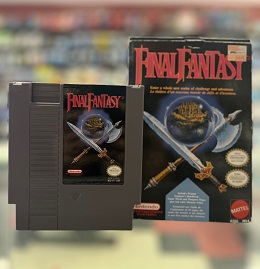Sony Playstation 2(PS2)
The PlayStation 2 (abbreviated “PS2”) is Sony’s second video game console, the successor to the successful PlayStation and the predecessor to the PlayStation 3 as part of the PlayStation series. Its development was announced in March 1999 and it was released a year later in Japan.
The PS2 is part of the sixth generation era, and is the best-selling console to date, having reached over 120 million units in sales in 2007. On November 19, 2005, the PS2 became the fastest game console to reach 100 million units shipped, accomplishing the feat within 5 years and 9 months from its launch. This was faster than its predecessor, the PlayStation, which took “9 years and 6 months since launch” to reach the same benchmark.
Only a few million people had obtained consoles by the end of 2000 due to manufacturing delays. The PS2 was so popular after its release that it was difficult to find units on retailer shelves. Another popular option was purchasing the console online through auction websites such as eBay. The PS2 initially sold well partly on the basis of the strength of the PlayStation brand and the console’s backward compatibility, selling over 900,000 units in the first weekend in Japan. This allowed the PS2 to tap the large install base established by the PlayStation — another major selling point over the competition. Later, Sony gained steam with new development kits for game developers and more PS2 units for consumers.
Many analysts predicted a close three-way matchup between the PS2 and competitors Microsoft’s Xbox and the Nintendo GameCube (GameCube being the cheapest of the three consoles and had an open market of games); however, the release of several blockbuster games during the 2001 holiday season maintained sales momentum and held off the PS2’s rivals.
Although Sony, unlike Sega with its Dreamcast, placed little emphasis on online gaming during its first years, that changed upon the launch of the online-capable Xbox. Sony adapted in late 2002 to compete with Microsoft, with several online first–party titles released alongside it, such as SOCOM: U.S. Navy SEALs to show its active support for Internet play. Sony also advertised heavily, and its online model had the support of Electronic Arts. Although Sony and Nintendo both started out late, and although both followed a decentralized model of online gaming where the responsibility is up to the developer to provide the servers, Sony’s attempt made online gaming a major selling point of the PS2.
In September 2004, in time for the launch of Grand Theft Auto: San Andreas (the best-selling game during the 2004 holiday season), Sony revealed a new, smaller PS2 (see Hardware revisions). In preparation for the launch of a new, slimmer PS2 model (SCPH-70000; also known unofficially as the “PStwo”), Sony stopped making the older PS2 model (SCPH-5000x) during the summer of 2004 to let the distribution channel empty its stock of the units. After an apparent manufacturing issue caused some initial slowdown in producing the new unit, Sony reportedly underestimated demand, caused in part by shortages between the time the old units were cleared out and the new units were ready. The issue was compounded in Britain when a Russian oil tanker became stuck in the Suez Canal, blocking a ship from China carrying PS2s bound for the UK. During one week in November, British sales totaled 6,000 units — compared to 70,000 units a few weeks prior. There were shortages in more than 1700 stores in North America on the day before Christmas.
The PS2 hardware can read both CDs and DVDs and is backward compatible with PlayStation games. The ability to play DVD movies was an added incentive for consumers to be able to justify purchasing the PS2 (the MSRP was US$300 in October 2000).
The PS2 also supports PlayStation memory cards (for PlayStation game saves only) and controllers as well, although the memory cards only work with PS1 games and the controllers may not support all functions (such as analog buttons) for PS2 games. There is also support for the internal PlayStation 2 HDD which is placed in the expansion bay at the rear of the console (pre-Slim models only).
The PS2’s DualShock 2 controller is essentially an upgraded PlayStation DualShock; analog face, shoulder and D-pad buttons replaced the digital buttons of the original. All of the input buttons include the D-pad, the right buttons (X,O,□,∆), the back buttons (R1, R2, L1, L2), the analog joystick buttons (R3, L3), and the middle buttons (Start, Select, Analog).
When it was released, the PS2 had many advanced features that were not present in other contemporary video game consoles, including DVD-playback functionality, USB support, and IEEE 1394 expansion ports. It was not until late 2001 that the Microsoft Xbox became the second console to include USB support (USB 1.1 with a proprietary Microsoft Xbox-shaped socket) and DVD playback capabilities (which were sold separately).
Compatibility with USB devices is dependent on the software supporting the USB device. For example, the PS2 BIOS will not boot an ISO image from a USB flash drive or operate a USB printer, as the machine’s operating system does not include this functionality. By contrast, Gran Turismo 4 is programmed to save screenshots to a USB mass storage device and print images on certain USB printers.
With the purchase of a separate unit called the Network Adapter (which is built into the slimline model), some PS2 games support online multiplayer. Instead of having a unified, subscription-based online service like Xbox Live, online multiplayer on the PS2 is split between publishers and run on third-party servers. Most recent PS2 online games have been developed to exclusively support broadband Internet access. Xbox Live similarly requires a broadband Internet connection.





 Final Fantasy (NES) - July 1990 (NA)
Final Fantasy (NES) - July 1990 (NA)